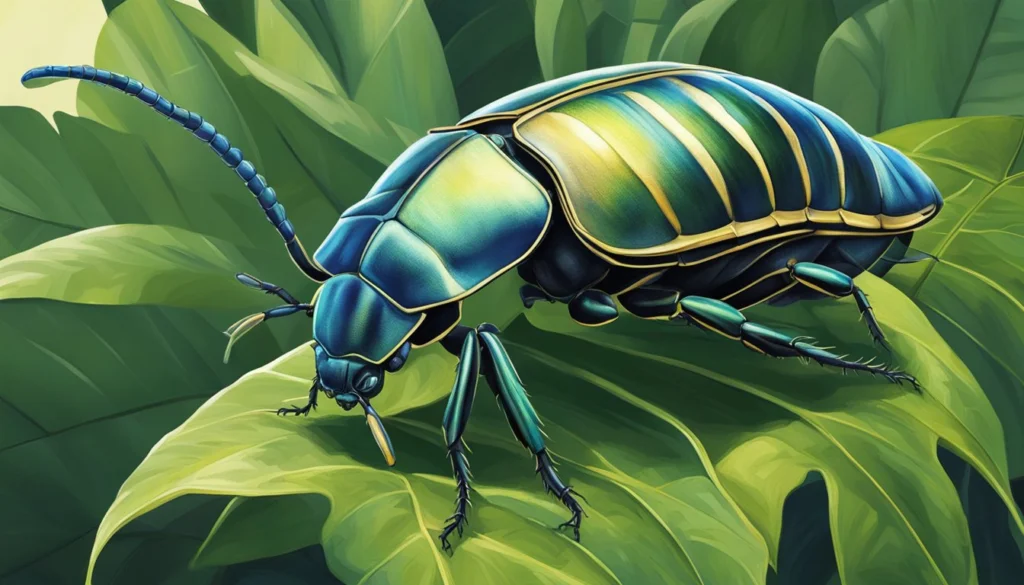When it comes to sheer size and strength, few insects can compare to the Goliath Beetle (Goliathus species). These massive beetles, native to the tropical forests of Africa, are among the largest and heaviest insects in the world.
Named after the biblical giant Goliath, they are known for their incredible size, impressive exoskeleton, and extraordinary strength. Let’s explore the fascinating world of Goliath Beetles and uncover the secrets behind their massive stature.
1. One of the Heaviest Insects in the World
Goliath Beetles are not only visually impressive but also incredibly heavy for an insect. Adult males can weigh up to 3.5 ounces (100 grams), making them some of the heaviest insects on Earth. To put that in perspective, a Goliath Beetle can weigh as much as a small bird.
Their size and weight vary depending on the species, with the largest species (Goliathus goliatus) growing up to 4.5 inches (11.5 cm) long. Female Goliath Beetles tend to be slightly smaller and lighter than males, but both genders are substantial in size compared to most other insects.
Size and Weight:
- Length: Up to 4.5 inches (11.5 cm)
- Weight: Up to 3.5 ounces (100 grams)
- Species: Largest species is Goliathus goliatus
2. Powerful Exoskeleton and Strength
Goliath Beetles are equipped with a hard exoskeleton that protects them from predators and environmental hazards. Their thick, chitinous shells come in striking patterns of black, brown, and white, helping them blend into their surroundings. While their appearance may be striking, their strength is perhaps even more remarkable.
These beetles are incredibly strong for their size and are known to carry loads up to 850 times their body weight. This strength is an adaptation that allows them to move through dense vegetation and carry food or other objects back to their burrows. In comparison, humans can typically only lift about twice their body weight, making the Goliath Beetle’s strength truly extraordinary.
Exoskeleton and Strength:
- Thick Exoskeleton: Provides protection and camouflage.
- Strength: Can lift up to 850 times their own body weight.
- Function: Helps navigate through dense vegetation and carry objects.
3. Diet: Larvae Are Voracious Eaters
The life cycle of a Goliath Beetle includes distinct changes in diet. While adult beetles primarily feed on tree sap, fruits, and other sugary substances, the larvae have a completely different diet. Goliath Beetle larvae are voracious eaters, consuming decaying wood, plant material, and even small insects.
The larvae spend months or even years underground, feeding and growing until they are ready to pupate and emerge as adults. During this stage, they can grow up to 6 inches long and weigh more than 3 ounces, making them some of the largest beetle larvae in the insect world. Their rapid growth during the larval stage allows them to reach their massive adult size.
Dietary Habits:
- Adults: Feed on tree sap, fruits, and sugary substances.
- Larvae: Feed on decaying wood, plant material, and small insects.
- Larval Stage: Can last for months or years, resulting in significant growth.
4. Flight Capabilities
Despite their bulky size, Goliath Beetles are capable of flight. Hidden beneath their thick, hardened wing cases (elytra) are a pair of powerful wings. When preparing to fly, the beetle raises its elytra, unfolds its wings, and takes off into the air. However, due to their size and weight, Goliath Beetles are not agile fliers and generally fly short distances.
Flight is mainly used for short-range travel or to escape predators. Though they are capable of flying, Goliath Beetles prefer to crawl through the forest floor and tree trunks, where they can use their impressive strength to navigate their environment.
Flight Abilities:
- Wing Structure: Powerful wings hidden under hardened wing cases (elytra).
- Short-Range Flight: Used primarily for short distances.
- Preferred Movement: Crawling due to their size and weight.
5. Role in the Ecosystem
Goliath Beetles play an essential role in the ecosystems of Africa’s tropical forests. As larvae, they help decompose organic matter by breaking down decaying wood and plant material. This process recycles nutrients back into the soil, contributing to the health of the forest floor. The adult beetles, feeding on fruits and tree sap, assist in pollination and the dispersal of plant material.
In addition to their role as decomposers and pollinators, Goliath Beetles are a source of food for other animals, including birds and small mammals. Their large size makes them an attractive target, though their thick exoskeleton offers some protection from predators.
Ecosystem Role:
- Decomposition: Larvae break down decaying wood and plant material.
- Pollination: Adults help in the pollination of trees and plants.
- Food Source: Serve as prey for birds and small mammals.
6. Goliath Beetles in Captivity
Due to their impressive size and striking appearance, Goliath Beetles are popular among insect collectors and enthusiasts. They are commonly kept in captivity by hobbyists who appreciate their unique traits and manageable care requirements. In captivity, Goliath Beetles require a warm, humid environment with plenty of plant material for the larvae to feed on.
Captive breeding programs have helped increase the understanding of their life cycle and dietary needs, as well as how to care for them in a controlled environment. However, keeping Goliath Beetles as pets is a specialized hobby, as they require careful attention to humidity levels, diet, and habitat setup.
Captivity and Care:
- Popular in Insect Collections: Sought after by hobbyists for their size and appearance.
- Diet and Habitat: Require a humid environment and appropriate plant material for larvae.
- Captive Breeding: Helps in studying their life cycle and behavior.
Conclusion
The Goliath Beetle is a true marvel of nature. With its massive size, incredible strength, and important role in the ecosystem, this beetle represents one of the most fascinating insects on Earth. Whether admired for its ability to carry enormous loads or its contribution to the health of tropical forests, the Goliath Beetle stands out as a giant among insects. Its extraordinary adaptations and life cycle make it a captivating subject for entomologists and insect enthusiasts alike.
FAQ
How big do Goliath Beetles get?
Goliath Beetles can grow up to 4.5 inches in length and weigh as much as 3.5 ounces, making them some of the largest and heaviest insects in the world.
What do Goliath Beetles eat?
Adult Goliath Beetles primarily feed on sugary substances like tree sap and fruits. The larvae, on the other hand, feed on decaying wood, plant material, and small insects.
Can Goliath Beetles fly?
Yes, Goliath Beetles are capable of flight. However, due to their size and weight, they prefer to crawl and only fly short distances when necessary.
Where are Goliath Beetles found?
Goliath Beetles are native to the tropical forests of Africa, where they thrive in warm, humid environments.
Are Goliath Beetles strong?
Yes, Goliath Beetles are incredibly strong for their size. They can lift up to 850 times their body weight, which is one of the highest strength-to-weight ratios in the animal kingdom.
Can Goliath Beetles be kept as pets?
Yes, Goliath Beetles can be kept as pets, but they require specialized care, including a warm, humid environment and appropriate food for both larvae and adults.


